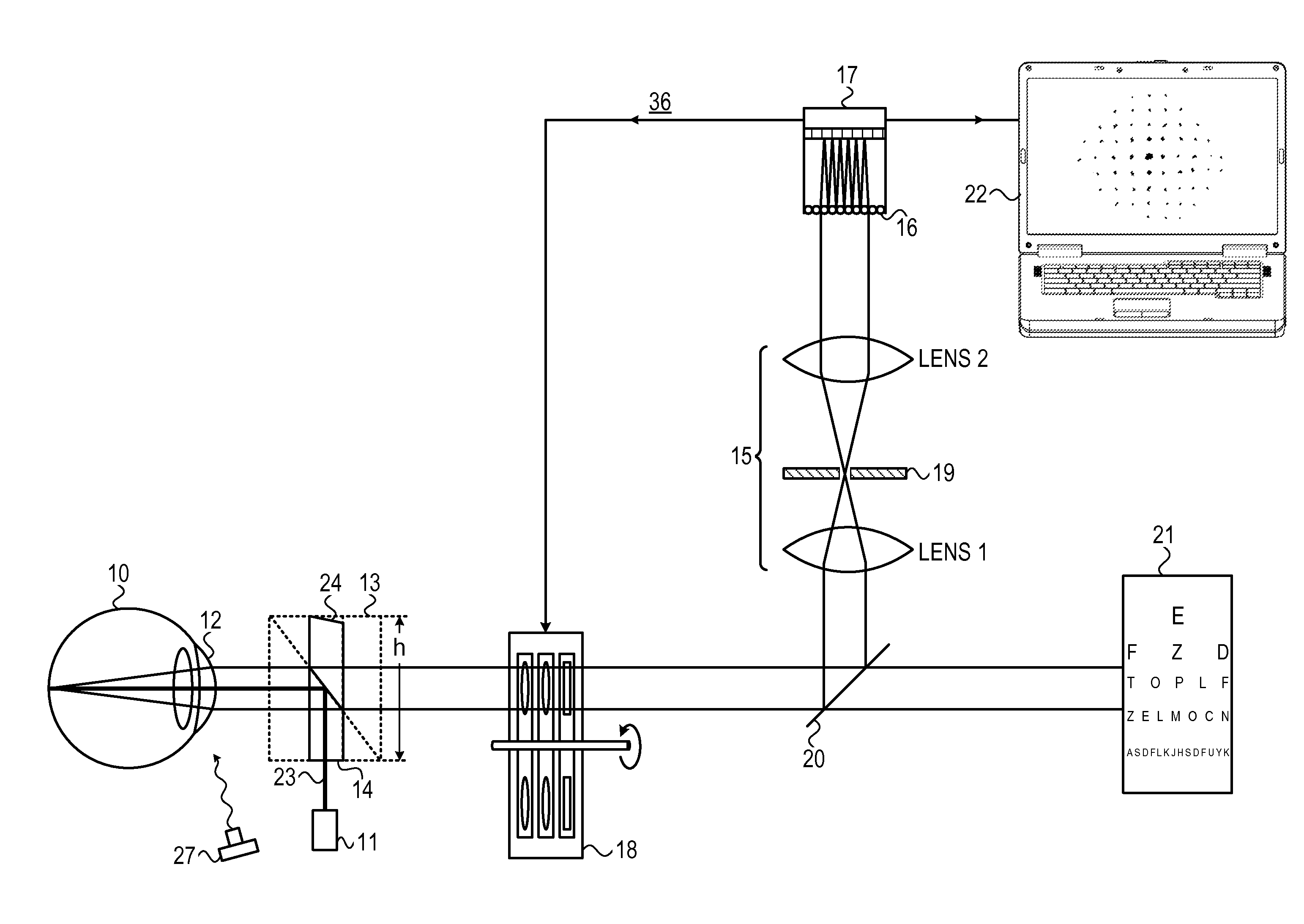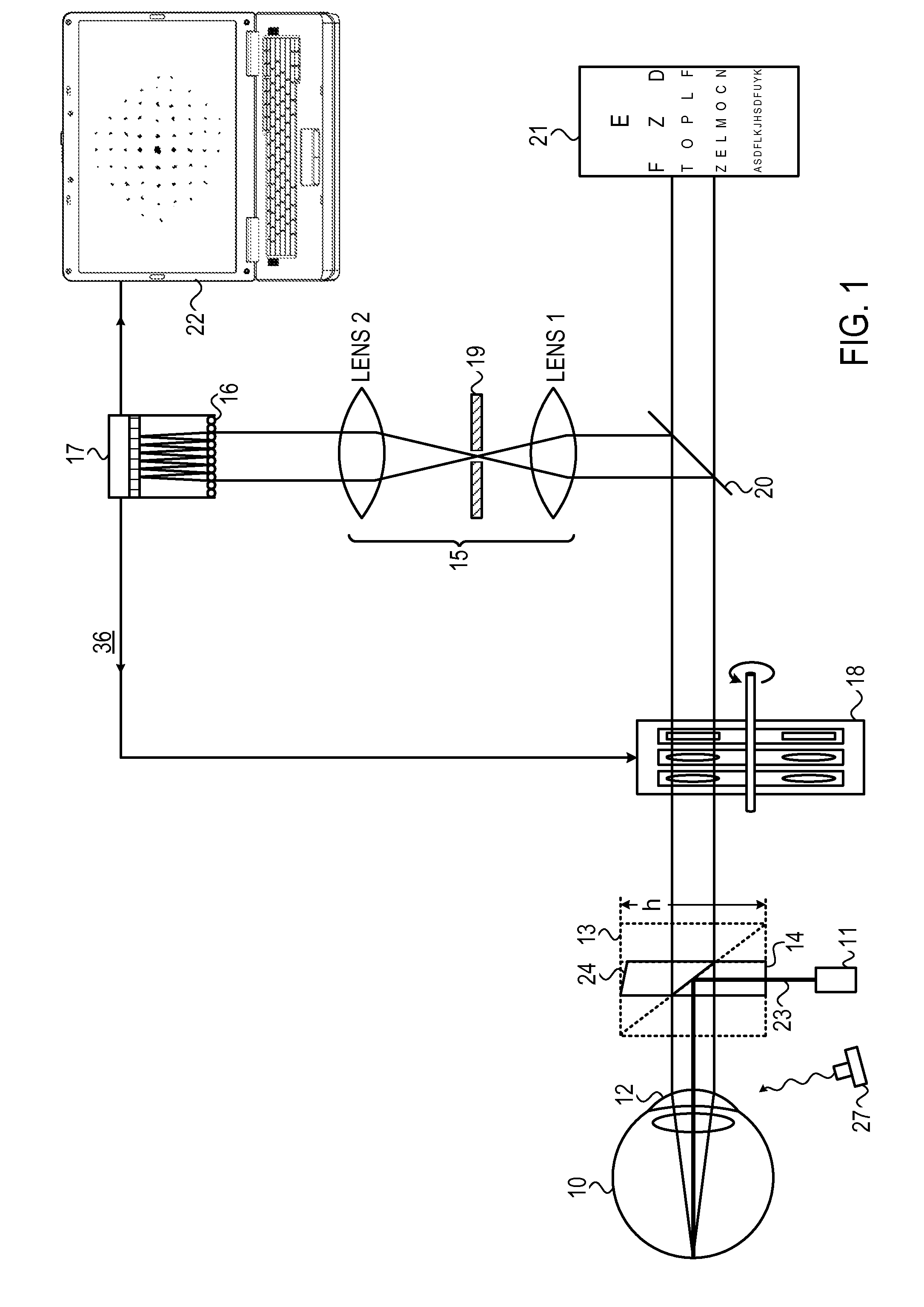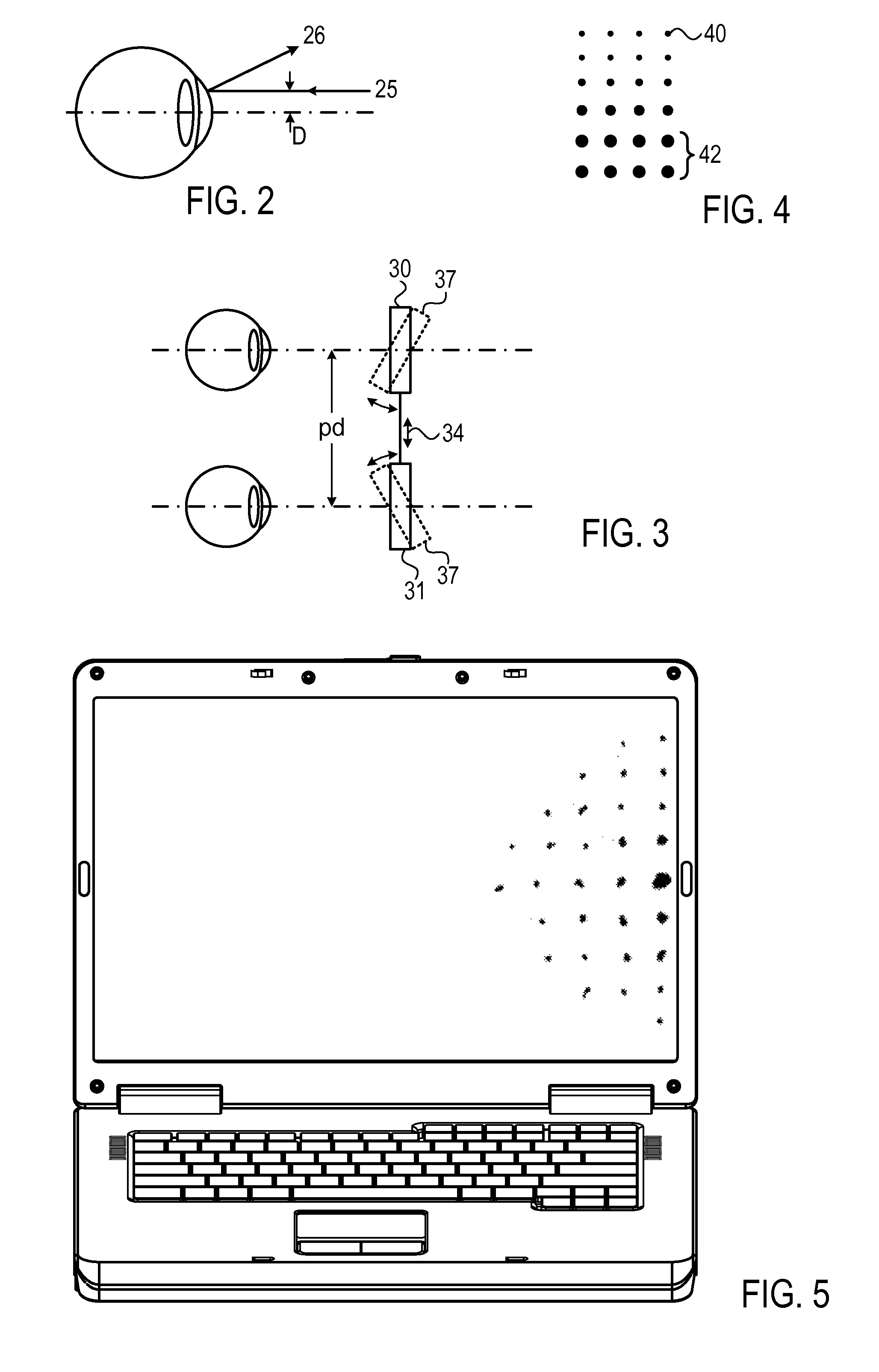Objective phoropter system
a phoropter and objective technology, applied in the field of ophthalmic measurement apparatus, can solve the problems of difficult to accurately perform subjective phoropter measurement alone, difficult to measure retinal reflection, and great difficulty in optimizing a function (the subject's vision), so as to reduce the effect of reflection, accurate measurement, and better correction
- Summary
- Abstract
- Description
- Claims
- Application Information
AI Technical Summary
Benefits of technology
Problems solved by technology
Method used
Image
Examples
Embodiment Construction
[0048]Reference is now made to FIG. 1, which illustrates schematically an example of a combined phoropter / wavefront analysis system of the type disclosed in this application. The subject's eye 10 is illuminated by means of a laser 11, though any other suitable collimated light source could be used, whose beam is directed into the eye by means of a beam splitter 14 located immediately in front of the subject's eye. The illumination is focused by the eye's optics towards the subject's retina, and the light reflected from the retina passes back through the optics of the eye, back through the input illumination beam splitter 14, and through the lens wheels of a phoropter 18. It may then be directed by a second beam splitter 20, away from the direct line of sight of the subject, and is optically focused through a pinhole beam aperture 19 disposed between a pair 15 of focusing lenses LENS1 and LENS2, and is directed into a Shack-Hartmann (SH) detector array. This most conveniently incorpo...
PUM
 Login to View More
Login to View More Abstract
Description
Claims
Application Information
 Login to View More
Login to View More - R&D
- Intellectual Property
- Life Sciences
- Materials
- Tech Scout
- Unparalleled Data Quality
- Higher Quality Content
- 60% Fewer Hallucinations
Browse by: Latest US Patents, China's latest patents, Technical Efficacy Thesaurus, Application Domain, Technology Topic, Popular Technical Reports.
© 2025 PatSnap. All rights reserved.Legal|Privacy policy|Modern Slavery Act Transparency Statement|Sitemap|About US| Contact US: help@patsnap.com



